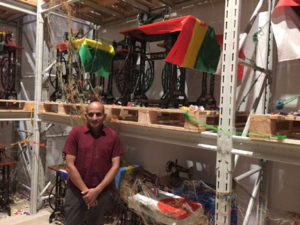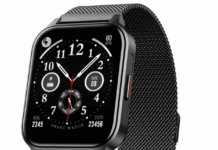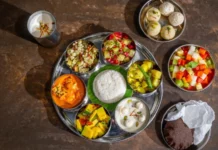 From the myriad experiences of his extensive travels across the world was born Indian artist N S Harsha’s new installation work ‘Nations’ that connects 193 sewing machines to represent the world’s diversity.
From the myriad experiences of his extensive travels across the world was born Indian artist N S Harsha’s new installation work ‘Nations’ that connects 193 sewing machines to represent the world’s diversity.
The installation, which is on display at the Mori Museum in Japan, has connected the machines, symbolic of the member countries of the United Nations, with different colored threads to create a vision of a world divided by flags and socio-cultural and economic lines.
Based on a children’s flags book that was sold in his hometown Mysore, the artwork aims to raise issues of labor outsourcing, migration and the forces of global markets.
“Actually this project was based on a children’s flags book sold in small shops in Mysore. After travelling to many parts of the world and experiencing complex cultural, political, social engagements and exchanges, I wanted to create a space which reflects these experiences so ‘Nations’ was born.
“For me these beautiful machines are a metaphor for human labor. They create firm bonding between two edges. They give strength to the clothes we wear and use in our daily lives. All these characters are needed and essential for mankind in present global conditions,” Harsha told PTI.
However, the artist insists that he does not wish to send out a message through the artwork, which he says, “celebrates the richness in communication and bonding”.
“There is no direct message in this piece. I always believe ‘art’ is not a vehicle for ‘message’ but it has the power to trigger and enrich several subtle ‘human’ qualities within us, which get hidden or muted while we live our busy everyday lives,” he says.
The exhibition titled “Charming Journey” by the Mori Museum is a mid-career retrospective on Harsha, and features major works by the artist since 1995, while exploring themes running consistently through his practice.
The artist is highly driven by the “fertile” Indian ‘art ecosystem’ which he credits to the country’s rich history, and tends to combine details of the cultural traditions in India with subjects in the news to reflect the “shifting world”.
In ‘Nations’, for instance, he has used the cloth in the form of a flag of each country on the sewing machines to recall the pivotal role of clothing in the national struggle for Independence of India.

• Harsha, who pays a lot of attention to “indigenous knowledge systems” and “new technologies in agriculture” creates works that draw attention to the “whimsical as well as to the tragic entanglement of life”.
Talking about his thought process while creating an artwork, Harsha says, “Life poses many ambiguous and cryptic situations in everyday life, during which being in the process of ‘art’ helps me to have more clarity in the journey of life.
“Sometimes there is no reason to paint, but ‘painting’ in itself becomes a reason to get involved in it intensely.”
Currently, he is focusing more on the “internal journey” in his studio.
“Lately I focus more on internal journey in studio, it gives me much grounded feeling. There are few exhibitions planned in different places. Dates are not set because process is still on in studio,” he said.
The sewing machines used in ‘Nations’ have been provided by Usha International Limited, after the artist could not procure more than 15 machines in Tokyo.
The exhibition is set to continue till June 11.-PTI
Trisha Mukherjee







